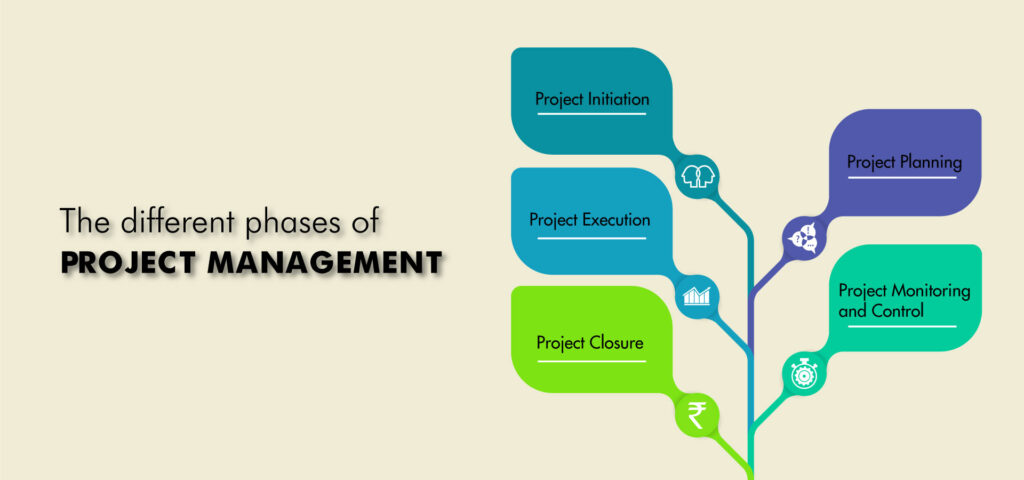Ever hear of the ‘Seven Wonders of the World’? Well, you know that most of those are man-made, that does not take away from the wonder of it, rather, it adds to it. There was a time in history, long ago, when we did not just build office complexes and skyscrapers. There was, in fact, a time where we built monuments to civilisation and human ingenuity with nothing but the most basic of tools and our bare hands. How was this possible you ask? Simple; we were great at project management. It may seem like a term to be thrown around the office, but it is much more than that. It lives in our DNA; it is who we are. We build things together; we always have and probably always will.
Understanding What Project Management Is All About
The definition of what it exactly means has varied over the years. The common origin is agreed to be one that originates in the 1960s, when businesses were looking to unify their workflow into something more compound and efficient – a project. Despite the different forms it has taken over the years, communication and collaboration are key elements in a project and essential to the project management approach.
If you want to get scientific about it, it can be described as a combination of practices or steps that have been taken to deliver a final work output. It is a scientifically-proven approach to executing a certain task or set of tasks for the business or a certain goal. It is not to be confused with running the business itself.
This modern-day definition allows it to include other theories and methodologies in parallel, such as leadership and management approaches. In fact, project management is simply a very niche management style that takes care of very narrow but important business functions.
‘‘
Though it may have its origins in business and science, it would serve well to keep in mind that at the end of the day, it all comes down to human communication.
What Is The Point Of It?
Like any other business model or management concept that was developed over the last two centuries, it was meant to increase efficiency, to be frank. This approach allows the upper management to have more control over the business processes and gives them a clear view of the goings-on.
As mentioned earlier, it is not the business itself, just bits and pieces, individual projects that together make up the inner machine of the company’s beast. In that sense, it is a tool rather than a full-on plan, thanks to its defined nature of having a fixed beginning, middle and end. A step-by-step guide if you will. In today’s economy, a clear-cut path to success is a valuable commodity.

Where It All Began
The concept of managing projects has been around since early civilisation and has contributed to many great monuments throughout human history. One such example is the construction of the Pyramids of Giza, an undertaking so massive in comparison to the level of technology available at the time that it defies reason. One thing that historians do agree on is that it serves as a prime example of what can be achieved if human beings get organised.
As for the modern rendition of project management, that was born around the 1950s. In 1956, ‘The American Association of Cost Engineers’ were formed and they formulated project management to help run cost estimates and schedules. Later down the line around 1958, the U.S. The Navy invented ‘Program Evaluation Review Technique (PERT)’. It was formed to analyse the different tasks involved in completing an overall project and the minimum time needed to do so.
This is as far as the early forms of the project management went, purely used for its efficiency in saving time and money, as well as some degree of coordination for tasks. Then in the 1960s, the moon landing happened – the first large-scale modern achievement of humanity. The successful execution of this brought people to the realisation that large-scale project management skills were a benefit to society.
With the advent of globalisation and technological development in the 1980s and 1990s, like e-commerce and the internet, it became much easier for businesses to readily integrate project management as a working principle in a more widespread manner.
The Different Phases Of Project Management
As a project manager, you need to ensure certain steps are taken in the setting up of the project and how it is going to be approached. Here are some of the building blocks and stages you need to address moving forward:
Initiation
Before starting, show your organisation and higher-ups that there is, in fact, a need for the project and that they will see a return on their investment should it be launched. You need to build a ‘business case’ – a fancy term that tells them why the project is needed and do an assessment of the project in terms of the cost needed to achieve the goals.
Planning
This is where you make sure you have all the schedules, payment systems, communication modes and reporting formats are laid out for easy access after the launch. Make sure that you have the funding ready and in place before-hand.
Execution
Getting started on the project won’t be easy. You will have to track and assign tasks to team members and different departments, do all the paperwork and account for any initial slip-ups. Call it, ‘growing pains’ if you will.
Monitoring & control
Just observing and fixing problems over the duration of the project. It is just maintenance if you think about it.
Close
Once the goals of the project are achieved, plan the next one. Project management does not end with one project, it ends when the business has what it needs. This could mean multiple projects.

‘‘
Project management is a role of supervision and dialogue, It is not a dictatorship.
Best Practices For The Best Chances
Communication
In business, it is never a monologue, or rather it should never be like that. Yes, there needs to be a hierarchy in the company but keep in mind that your employees have just as much invested in the company. Keep the channel of communication open for any and all feedback from your team. It not only brings a sense of equality and involvement in the business, but it also helps you identify which are the weak spots in the workflow that you need to fix.
Analyse
Going over your initial plan and revising it over and over, for the course of the project benefits the end goal as it refines the quality of work. This is where all that feedback is helpful. Another good way to do the analysis is to make use of tracking and business management software. There are so many on the market these days and they need only the basic understanding of technology.
Flexibility
If you have ever worked directly with the clients in your line of work, you know what it is like. Some tend to push for an earlier deadline, trying to save money and time, but all it ends up doing is affecting the result and the quality of the process. Push back against premature deadlines, as a project manager you have to maintain that quality till the end. Convince your clients to try to be a little more flexible so that the project can happen as it is supposed to.
Goal setting
Set realistic goals when you start a new project. Don’t try to overachieve. If there is time later down the road, you could attempt something more. It is best to avoid overwhelming your team right out the gate as this can put unnecessary pressure on them. Goals should be set as an indicator, not as a work instruction. Not every step of the work process has to be micromanaged, so long as the final result is on track to be completed.
Using IT
Make full use of the digital and IT resources at your disposal. The IT department has the best understanding of the business’s layout and how the project fits into it from a digital and technological standpoint. Rely on them to regularly assess your efficiency and allow them to automate as much of the project as possible.
Remember, these are just broad guidelines as to what you might want to consider doing, but as the project manager, it is your call. That said, there are a million ways in which management can be done, but only a few ways in which it can be done right. Check out our article on ‘management’ to learn how to be all that you can be in business.




